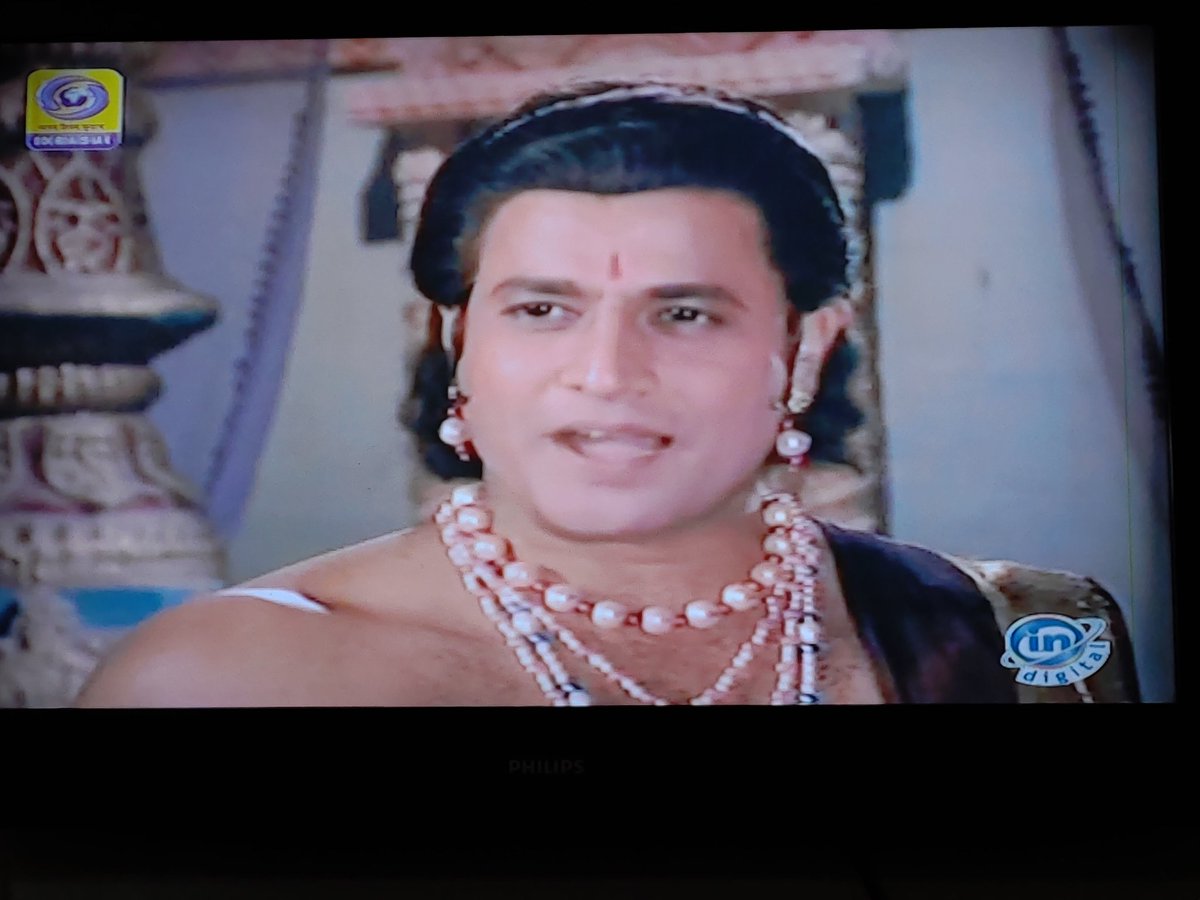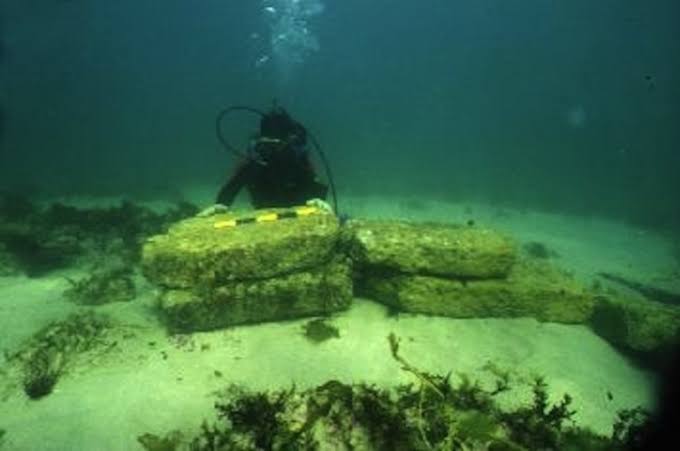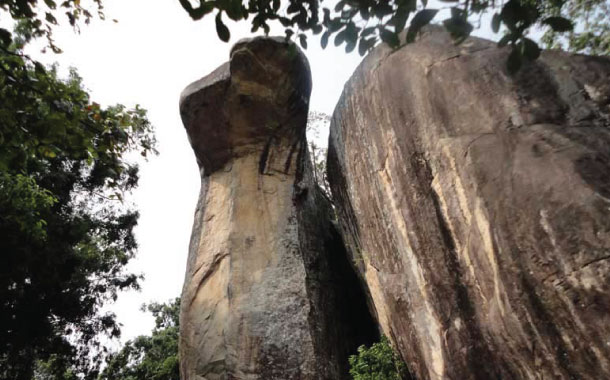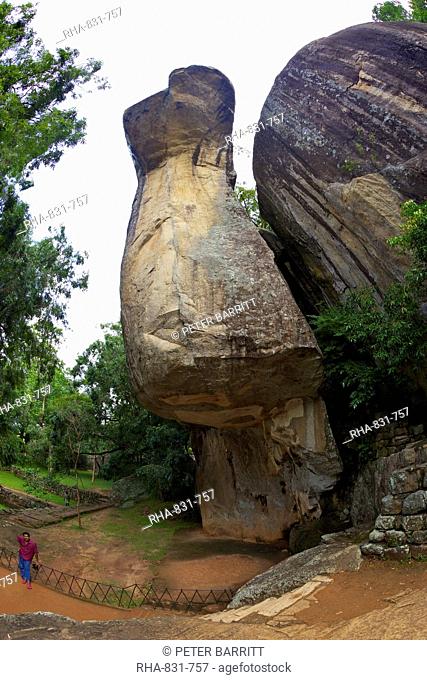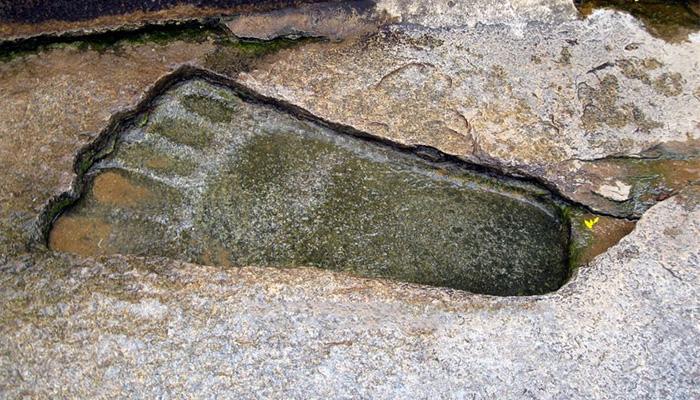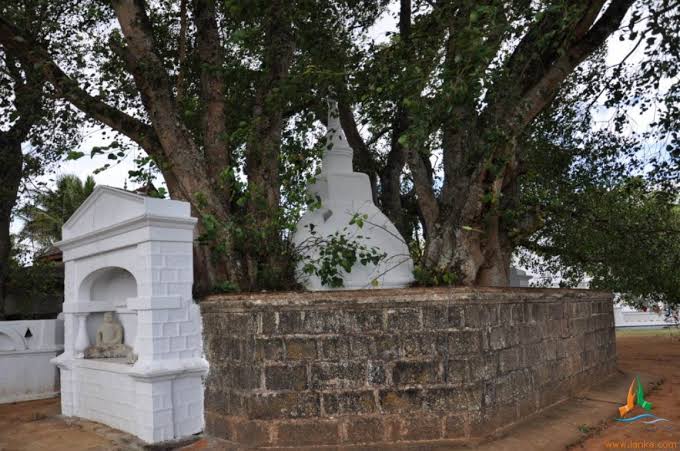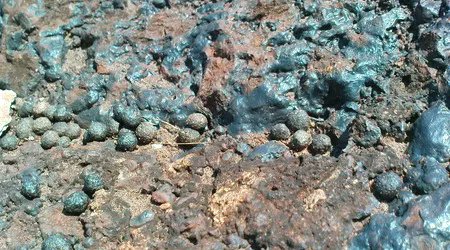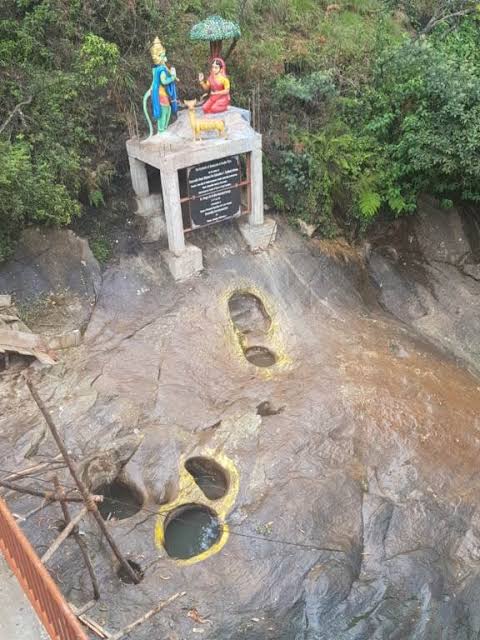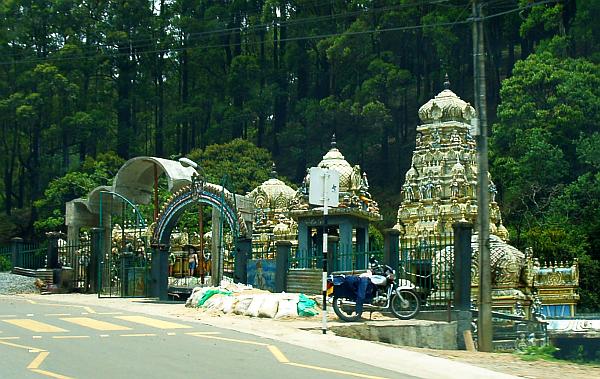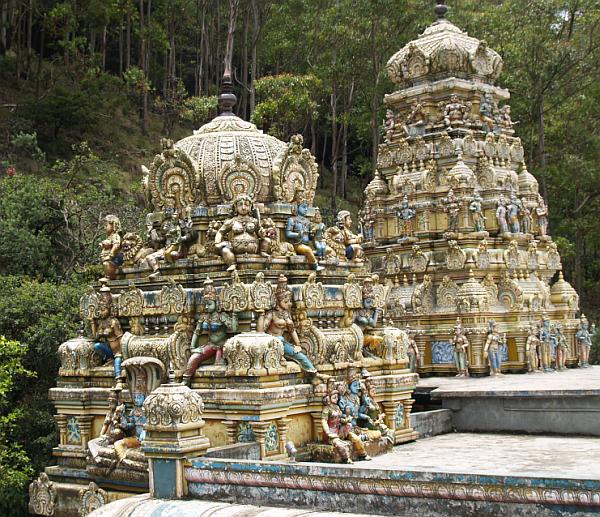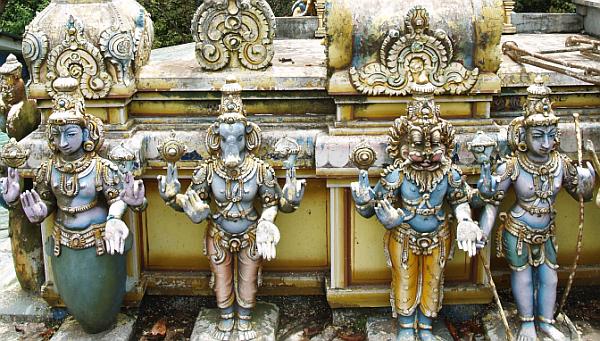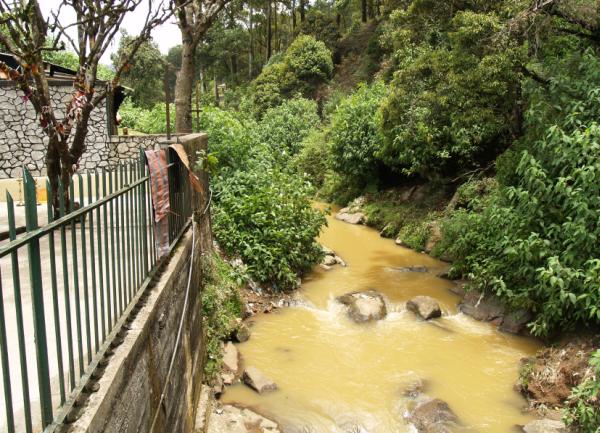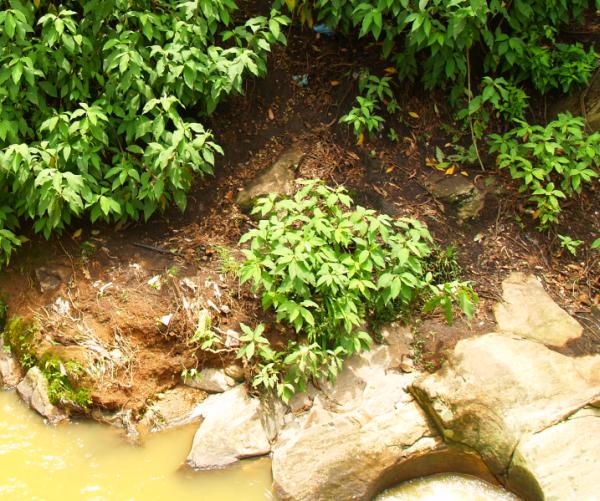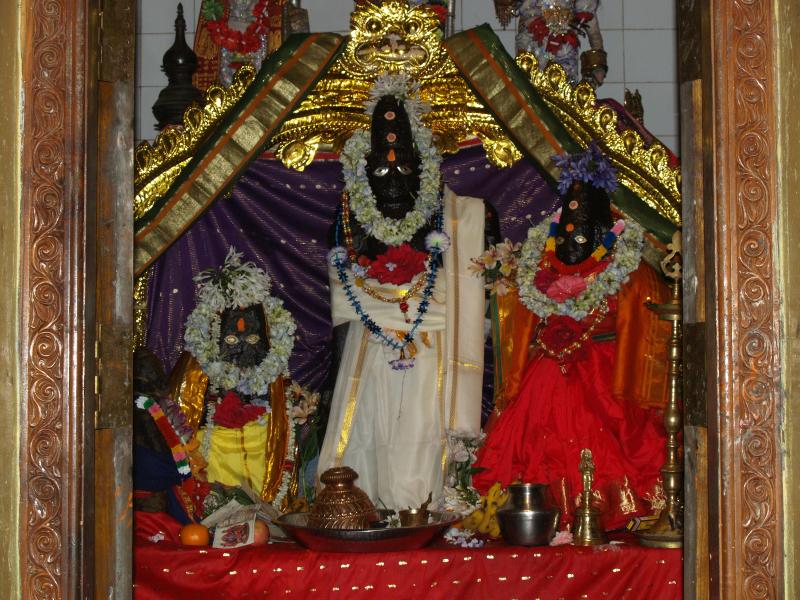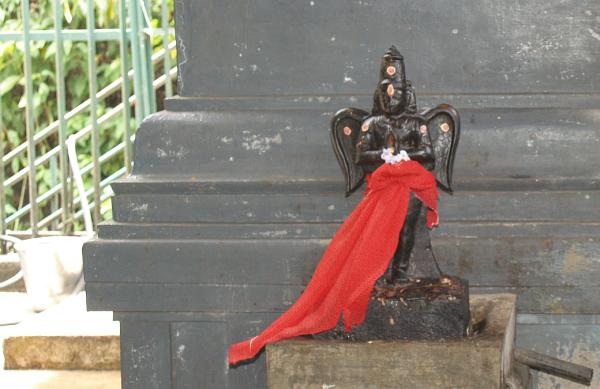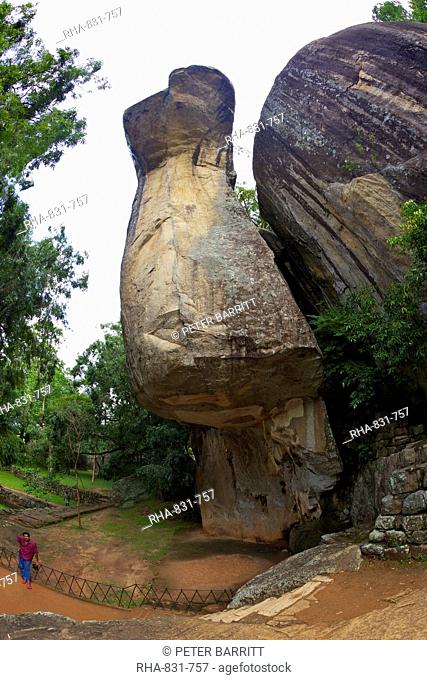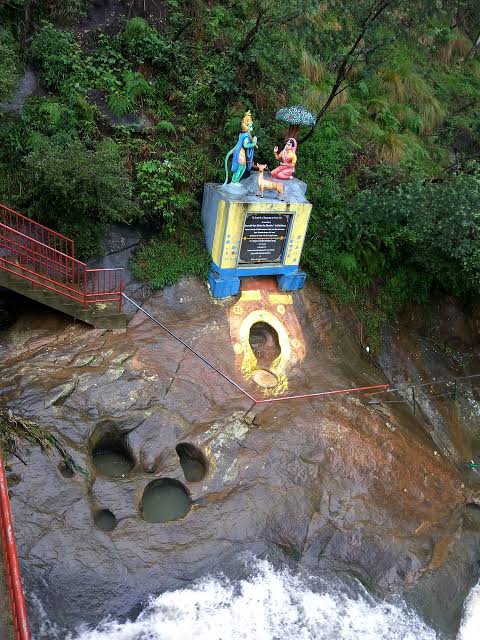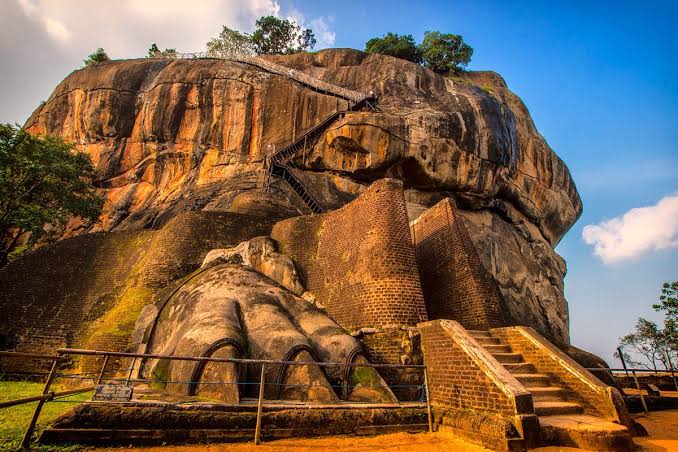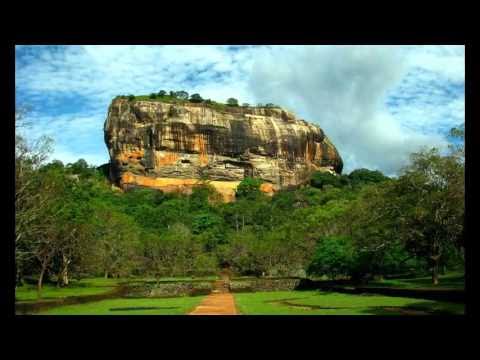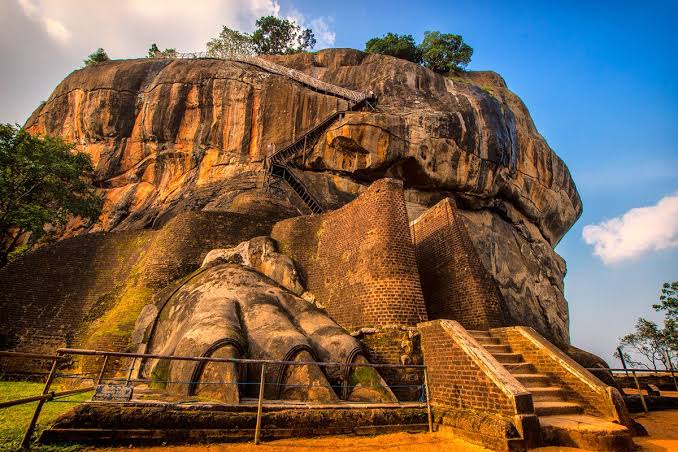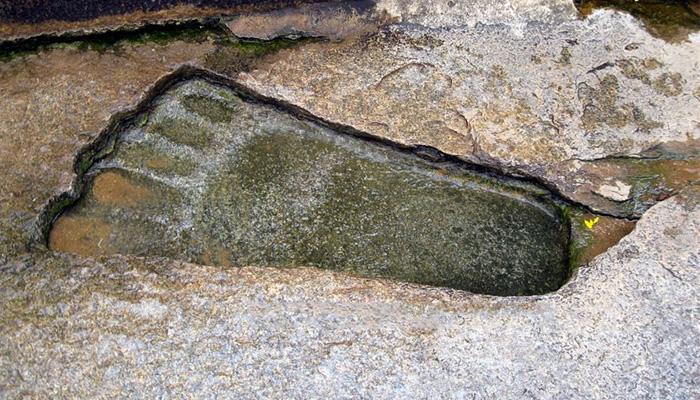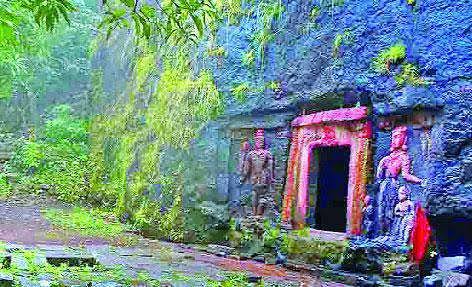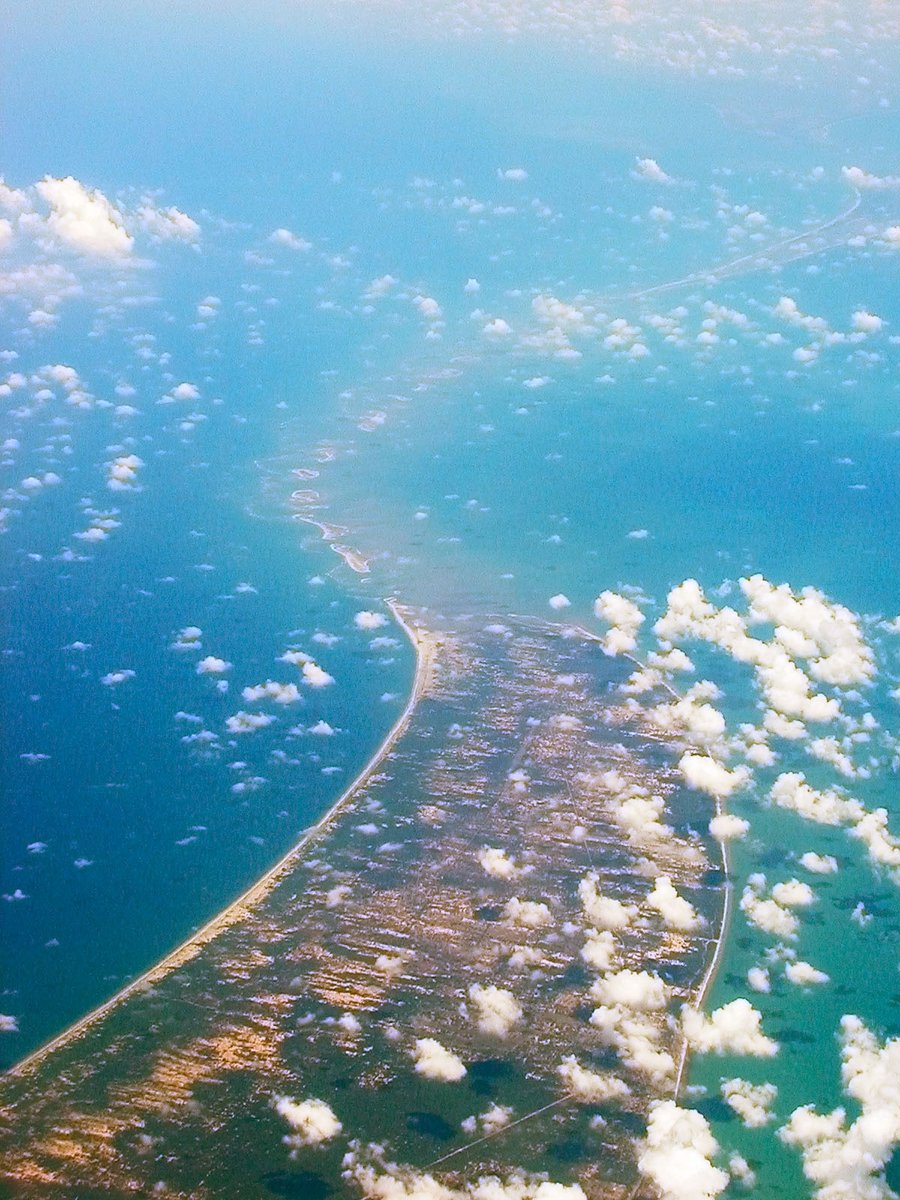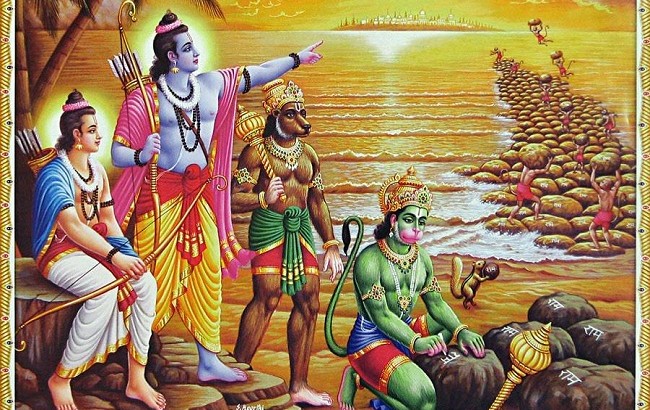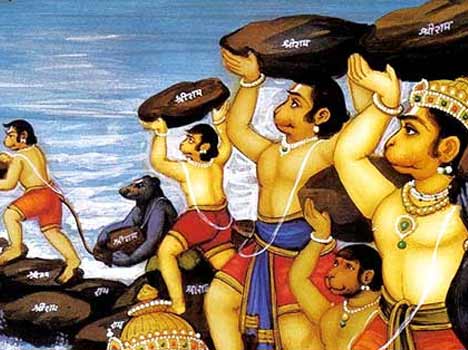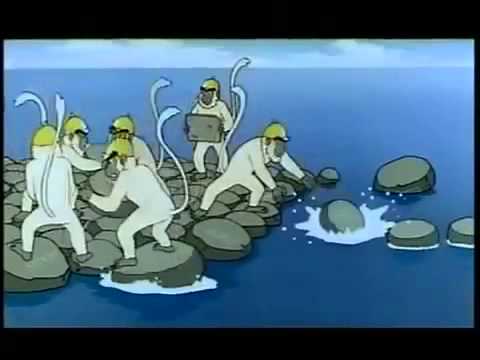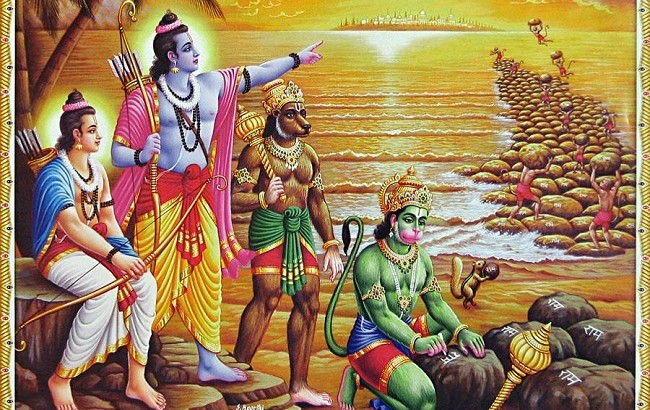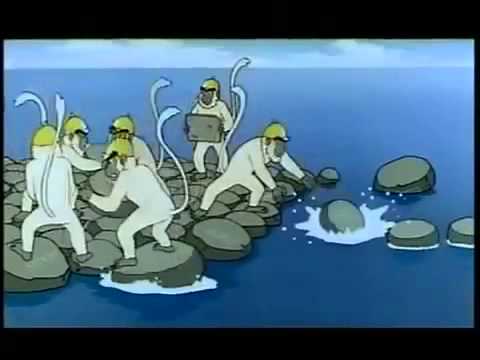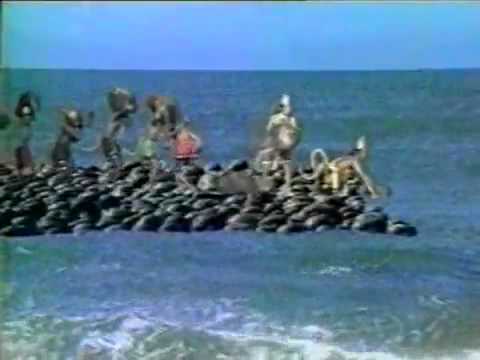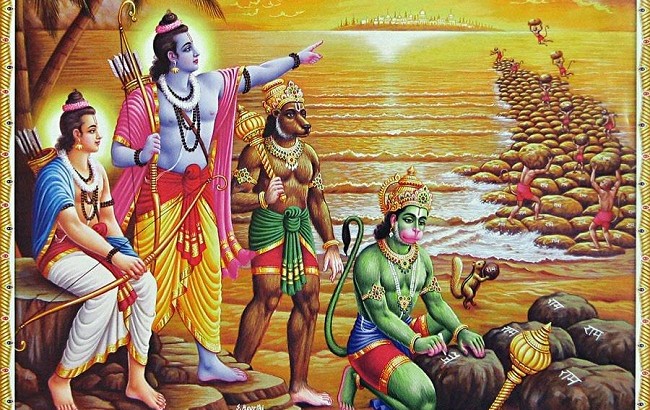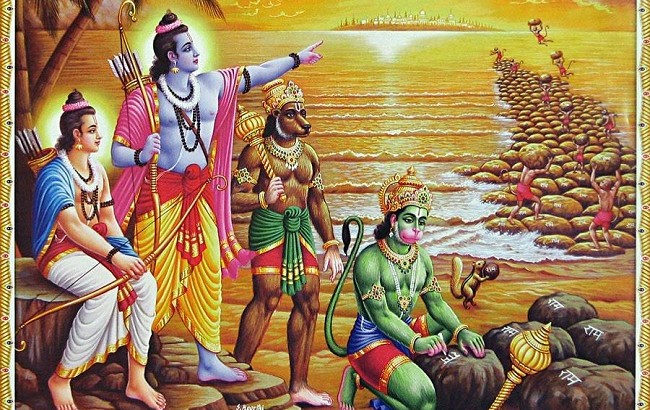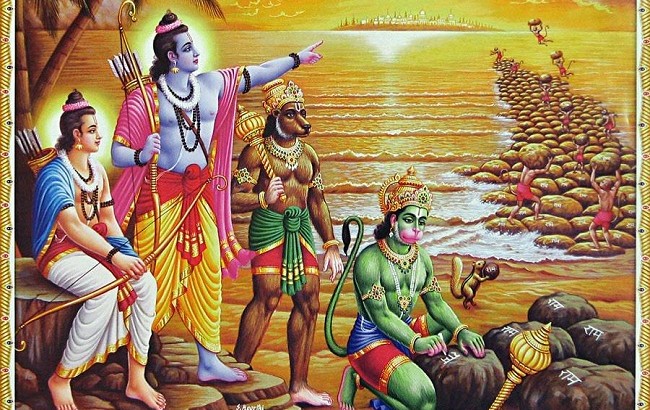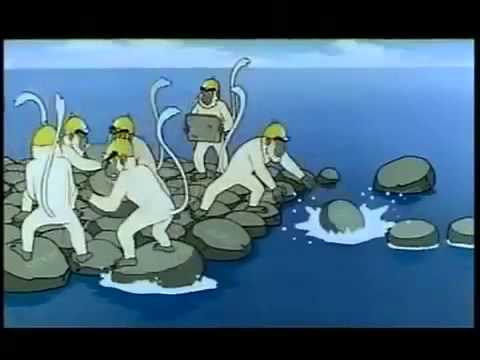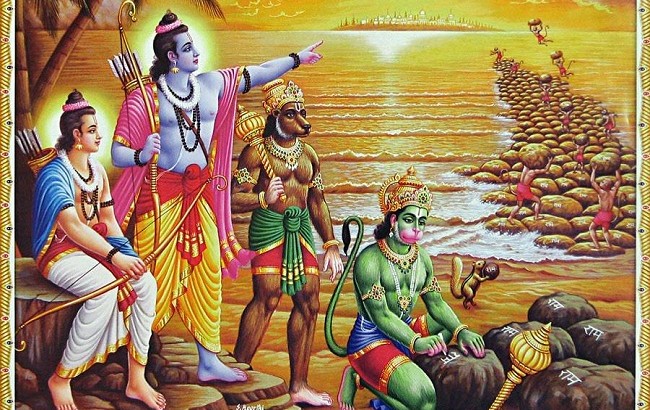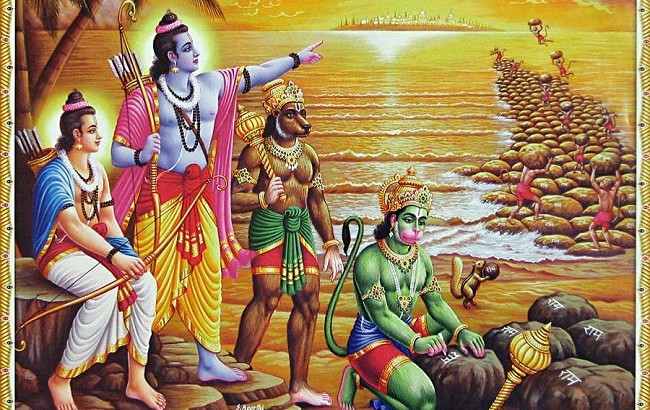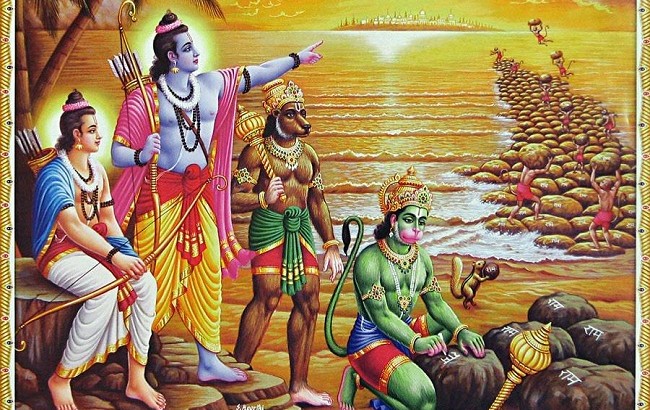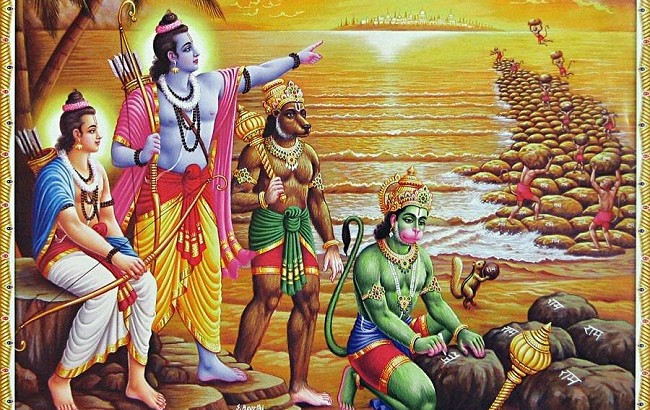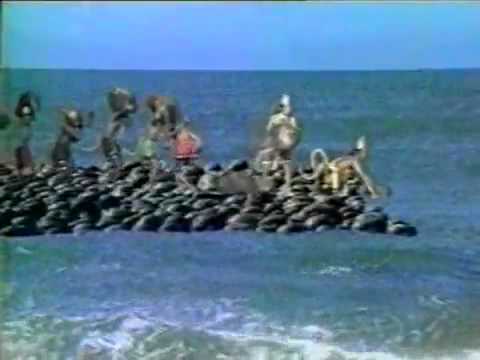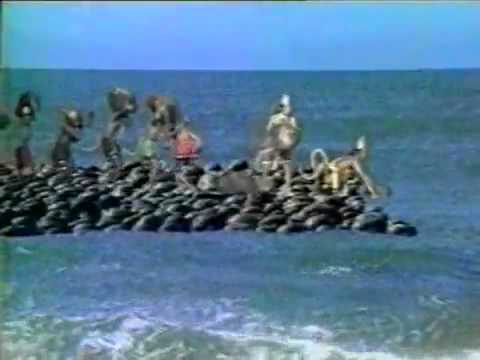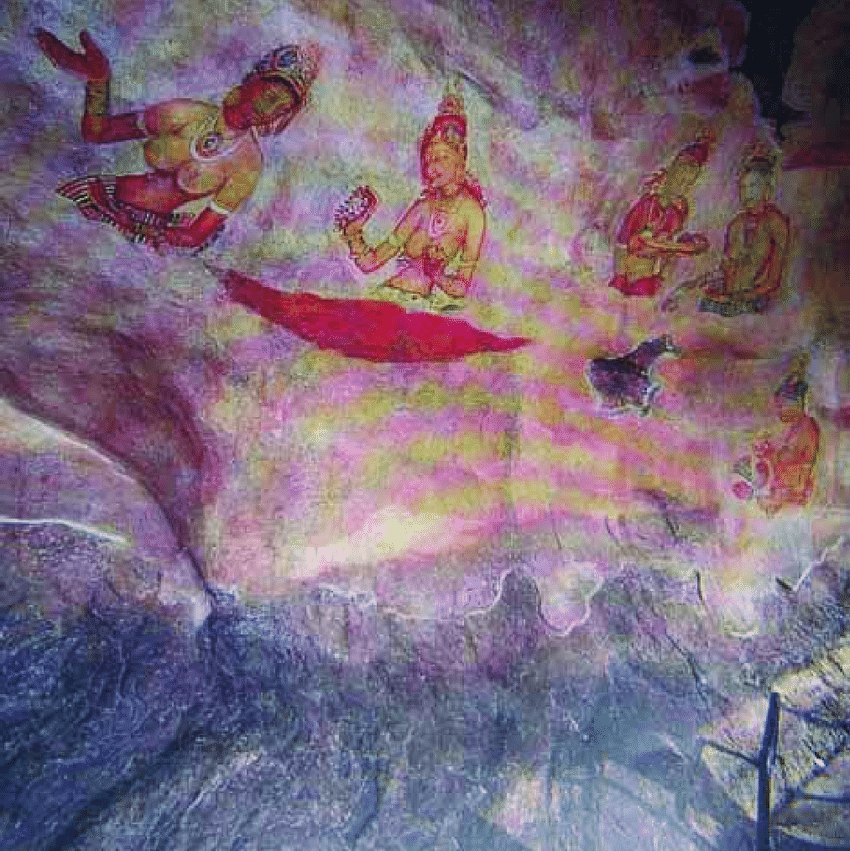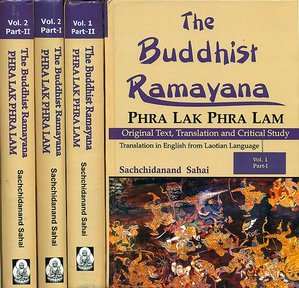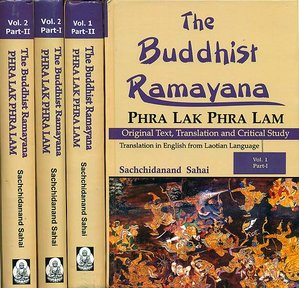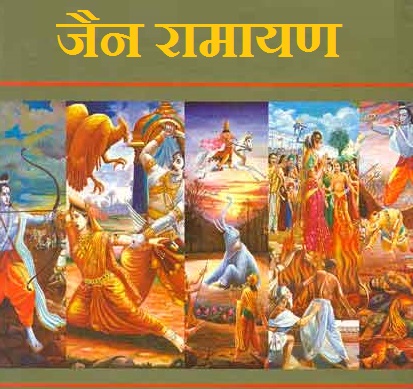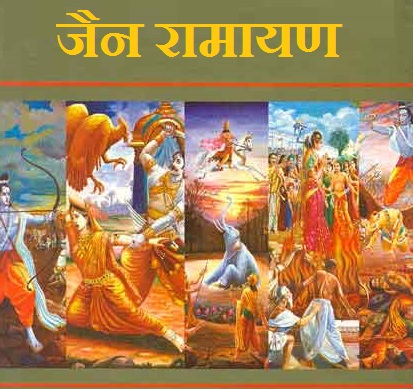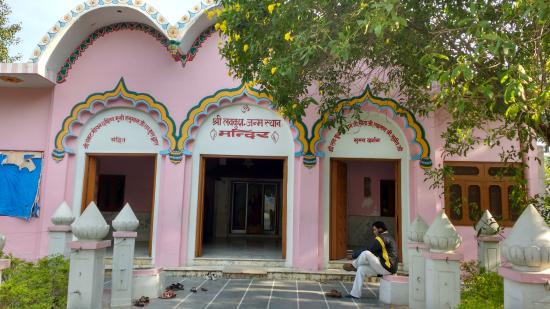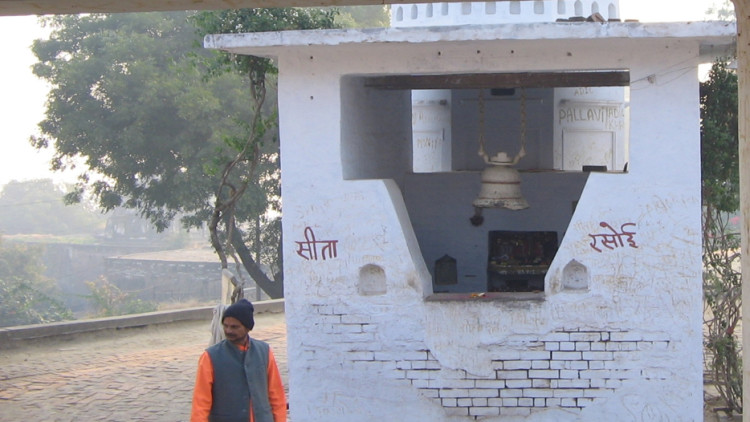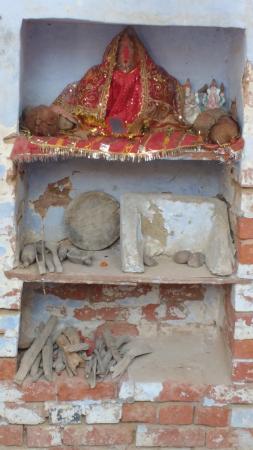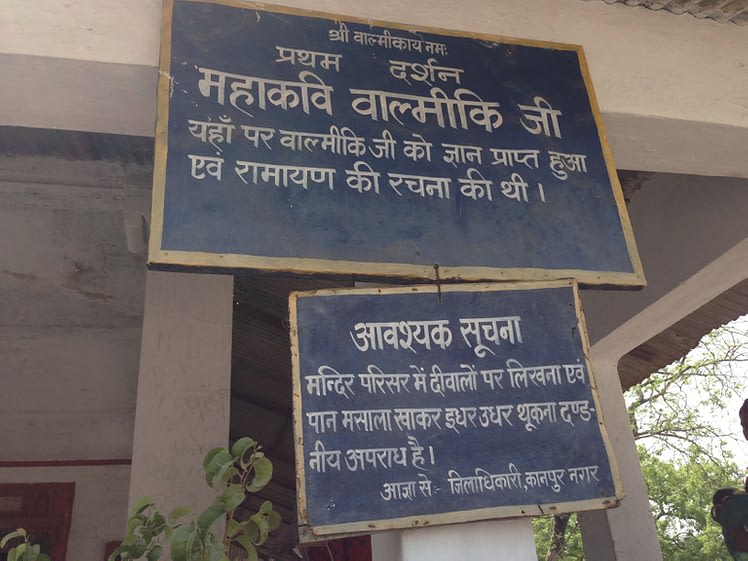Why is #Ramayan considered mythology by our own people when we have Ram Setu which is man made. 1.
As per the Institute for Scientific Research on Vedas (I-SERVE), planetarium software has ascertained the birth of Lord Rama as 10th January 5114 BC in Ayodhya.
Which matches time given in Valmiki Ramayana.
Which matches time given in Valmiki Ramayana.
Not just Ram Setu but we have real underwater #Dwarka as described in #Mahabharata
So #Krishna is historical hero not some mythological.
Sad that Hindus too don't refrain from using word mythology.
So #Krishna is historical hero not some mythological.
Sad that Hindus too don't refrain from using word mythology.
Sigiriya, Sri Lanka is a cave that has been tested by archaeologists to be a hundred percent natural, despite being untouched by human hands, has taken the shape of a cobra! this cave has cave paintings depicting scenes of Sita being captured by the Asuras. #Ramayana
It is believed that footprints of Bajranbali are found in Andhra Pradesh, Thailand, Sri Lanka and Malaysia.
#Ramayan
#IndianHeritage
#Ramayan
#IndianHeritage
Divurumpola, Sri Lanka
After Ram rescued Sita, he made her go through Agni Pariksha to test her purity. The place where this is said to have happened is Divurumpola in Sri Lanka. There is a tree in that exact spot and even today, local disputes are settled.
#Ramayan
After Ram rescued Sita, he made her go through Agni Pariksha to test her purity. The place where this is said to have happened is Divurumpola in Sri Lanka. There is a tree in that exact spot and even today, local disputes are settled.
#Ramayan
Proof Hanuman setting fire to Ravana’s kingdom. color of the soil of ancient battlefield is still red, and is still surrounded by lighter colored earth. One of the airports of Ravana, torched by Hanuman when he came looking for Sita, still has a scorched-earth look. #Ramayan
Ashok Vatika where Mata #Sita was kept hostage by #Ravan is situated in Central Province of Sri Lanka known Seetha Eliya. #Ramayana
Sri Seethai Amman temple is a unique temple it has been made at the place where #Seeta Mata spent her days in the prison of Ravana. #Ramayana
The top of Seeta Temple in Seetha Eliya.
Various Avatar of Sri #Vishnu Matsya Kurm Narasingh Parashuram. #Ramayana
Various Avatar of Sri #Vishnu Matsya Kurm Narasingh Parashuram. #Ramayana
#Seetha river which served Seetha Amman during her prison days. A century ago some idols were found from the river proving that the places was worshipped in the ancient past.
#Ramayana
#Ramayana
Burned Mud is still seen along the #Seetha river as a proof that here hanuman set the place on fire
#Ramayana
#Ramayana
The #Hanuman temple Sri Lanka at Ashok Vatika
Jetau is placed outside the temple #SeetaAmmanTemple Ashok Vatika
महल में रहने से इंकार कर दिया तब रावण ने सीता माता को एक गुफा के अंदर रखा जिसका सिर कोबरा सांप की तरह फैला हुआ था। इस गुफा के आसपार हल्की सी नक्काशी झलकती है।
#Ramayana
#Ramayana
देवी सीता के पैरों के निशान यहां मौजूद हैं, लेकिन उन पर किसी का पैर ना पड़े या कोई नुकसान ना पहुंच जाए इसलिए उस जगह परमंदिर बनवा दिया गया है #Ramayana
रावण का महल
पुरातत्व विभाग को श्रीलंका में एक ऐसा महल मिला है जिसे देख कर लगता है कि वह रामायण काल में बनाया गया होगा।
#Ramayan
पुरातत्व विभाग को श्रीलंका में एक ऐसा महल मिला है जिसे देख कर लगता है कि वह रामायण काल में बनाया गया होगा।
#Ramayan
रामायण इस बात का वर्णन है कि भगवान हनुमान ने रावण की लंका को जला दिया था। इस वजह इस जगह की मिट्टी काली हो गई थी और यह मिट्टी आज भी काली है।यहीं से थोड़ी दूर पर रावण एल्ला नाम से एक झरना है, जो 82 फीट की ऊंचाई से गिरता है।
#Ramayan
#Ramayan
रावण ने सुंबा और बाली द्वीप को जीतकर अपने शासन का विस्तार करते हुए अंगद्वीप, मलयद्वीप, वराहद्वीप, शंखद्वीप, कुशद्वीप, यवद्वीप और आंध्रालय पर विजय प्राप्त की थी। लंका पर कुबेर का राज्य था। लंका को जीतकर रावण ने उसको अपना नया निवास स्थान बनाया। #Ramayan
श्रीलंका की रामायण रिसर्च कमेटी की जानकारी के अनुसार श्रीलंका में एक स्थान जिसे रामायण काल से जोड़ कर देखा जाता है। अनुसंधान में यहां पर भगवान हनुमान का श्रीलंका में प्रवेश के लिए उत्तर दिशा में मौजूद नागदीप पर पैरों के निशान भी मिलते हैं। #Ramayan
इस स्थान की छानबीन में यह भी पाया गया कि राम व रावण के बीच यहीं पर भीषण युद्घ हुआ था। श्रीलंका में आज भी इस युद्घ-स्थान को युद्घगनावा नाम से जाना जाता है जहां पर रावण का भगवान राम ने वध किया था।
Sree #Ram had constructed this bridge to reach Sri Lanka. Surprisingly, the time of #Ramyana ( 5000 BCE) and the carbon analysis of the bridge sync properly.
#Valmiki #Ramayan describes process of #RamSetu construction in great details can be categorized as
1. Survey
2. Planning
3. Execution
4. Post Completion
1. Survey
2. Planning
3. Execution
4. Post Completion
औरसस्तस्य पुत्रोऽहम् सदृशो विश्वकर्मणा|
स्मारितोऽस्म्यहमेतेन तत्त्वमाह महोदधिः || २-२२-५०
न च अपि अहम् अनुक्तो वै प्रब्रूयाम् आत्मनो गुणान् |
#Valmiki #Ramayan
statemen given by #Nala accepts that he is son of #Vishvakarma & equal to his power.
स्मारितोऽस्म्यहमेतेन तत्त्वमाह महोदधिः || २-२२-५०
न च अपि अहम् अनुक्तो वै प्रब्रूयाम् आत्मनो गुणान् |
#Valmiki #Ramayan
statemen given by #Nala accepts that he is son of #Vishvakarma & equal to his power.
समर्थ्श्चाप्यहम् सेतुम् कर्तुम् वै वरुणालये || २-२२-५१
तस्मादद्यैव बध्नन्तु सेतुम् वानरपुङ्गवाः |
"I am capable of constructing a bridge across the ocean. Hence, let the foremost of monkeys build the bridge now itself."
Sree #Ram appoints #Nala as chief engineer
तस्मादद्यैव बध्नन्तु सेतुम् वानरपुङ्गवाः |
"I am capable of constructing a bridge across the ocean. Hence, let the foremost of monkeys build the bridge now itself."
Sree #Ram appoints #Nala as chief engineer
ततो निसृष्ट रामेण सर्वतो हरि यूथपाः || २-२२-५२
अभिपेतुर् महाअरण्यम् हृष्टाः शत सहस्रशः |
Then, being sent by Rama, hundreds and thousands of monkey heroes jumped in joy on all sides towards the great forest.
अभिपेतुर् महाअरण्यम् हृष्टाः शत सहस्रशः |
Then, being sent by Rama, hundreds and thousands of monkey heroes jumped in joy on all sides towards the great forest.
ते नगान् नग सम्काशाः शाखा मृग गण ऋषभाः || २-२२-५३
बभन्जुर् वानरास् तत्र प्रचकर्षुः च सागरम् |
Those army-chiefs of monkeys, who resembled mountains, broke the rocks and trees there and dragged them away towards the sea.
#Ramayana #RamSetu
बभन्जुर् वानरास् तत्र प्रचकर्षुः च सागरम् |
Those army-chiefs of monkeys, who resembled mountains, broke the rocks and trees there and dragged them away towards the sea.
#Ramayana #RamSetu
ते सालैः च अश्व कर्णैः च धवैर् वंशैः च वानराः || २-२२-५४
कुटजैर् अर्जुनैस् तालैस् तिकलैस् तिमिशैर् अपि |
बिल्वकैः सप्तपर्णैश्च कर्णिकारैश्च पुष्पितैः || २-२२-५५
चूतैः च अशोक वृक्षैः च सागरम् समपूरयन् |
#Ramayana #RamSetu
कुटजैर् अर्जुनैस् तालैस् तिकलैस् तिमिशैर् अपि |
बिल्वकैः सप्तपर्णैश्च कर्णिकारैश्च पुष्पितैः || २-२२-५५
चूतैः च अशोक वृक्षैः च सागरम् समपूरयन् |
#Ramayana #RamSetu
Those monkeys filled the ocean with all types of trees like Sala and Asvakarna, Dhava and bamboo, Kutaja, Arjuna, palmyra,Tilaka, Tinisa, Bilva, Saptaparna, Karnika, in blossom as also mango and Asoka.
#Ramayana #RamSetu
#Ramayana #RamSetu
समूलामः च विमूलामः च पादपान् हरि सत्तमाः || २-२२-५६
इन्द्र केतून् इव उद्यम्य प्रजह्रुर् हरयस् तरून्
#Ramayana #RamSetu
इन्द्र केतून् इव उद्यम्य प्रजह्रुर् हरयस् तरून्
#Ramayana #RamSetu
The excellent monkeys, the forest animals lifted and brought, like Indra's flag posts, some trees with roots intact and some others without roots.
#Ramayana #RamSetu
#Ramayana #RamSetu
तालान् दाडिमगुल्मांश्च नारिकेलविभीतकान् || २-२२-५७
करीरान् बकुलान्निम्बान् समाजह्रुरितस्ततः |
From here and there the monkeys brought Palmyra trees, pomegranate shrubs, coconut and Vibhitaka, Karira, Bakula and neem trees.
#Ramayana #RamSetu
करीरान् बकुलान्निम्बान् समाजह्रुरितस्ततः |
From here and there the monkeys brought Palmyra trees, pomegranate shrubs, coconut and Vibhitaka, Karira, Bakula and neem trees.
#Ramayana #RamSetu
हस्तिमात्रान् महाकायाः पाषाणांश्च महाबलाः || २-२२-५८
पर्वतांश्च समुत्पाट्य यन्त्रैः परिवहन्ति च |
The huge bodied monkeys with mighty strength uprooted elephant-sized rocks and mountains and transported them by mechanical contrivances.
#Ramayana #RamSetu
पर्वतांश्च समुत्पाट्य यन्त्रैः परिवहन्ति च |
The huge bodied monkeys with mighty strength uprooted elephant-sized rocks and mountains and transported them by mechanical contrivances.
#Ramayana #RamSetu
प्रक्षिप्यमाणैर् अचलैः सहसा जलम् उद्धतम् || २-२२-५९
समुत्पतितम् आकाशम् अपासर्पत् ततस् ततः |
The water, raised up due to sudden throwing of mountains in the sea, soured upward towards the sky and from there again, gushed back.
#Ramayana #RamSetu
समुत्पतितम् आकाशम् अपासर्पत् ततस् ततः |
The water, raised up due to sudden throwing of mountains in the sea, soured upward towards the sky and from there again, gushed back.
#Ramayana #RamSetu
समुद्रम् क्षोभयामासुर्निपतन्तः समन्ततः || २-२२-६०
सूत्राण्यन्ये प्रगृह्णन्ति ह्यायतम् शतयोजनम् |
The rocks befalling on all sides perturbed the ocean. Some others drew up strings a hundred Yojanas long (in order to keep the rocks in a straight line.)
#Ramayana #RamSetu
सूत्राण्यन्ये प्रगृह्णन्ति ह्यायतम् शतयोजनम् |
The rocks befalling on all sides perturbed the ocean. Some others drew up strings a hundred Yojanas long (in order to keep the rocks in a straight line.)
#Ramayana #RamSetu
नलः चक्रे महासेतुम् मध्ये नद नदी पतेः || २-२२-६१
स तदा क्रियते सेतुर्वानरै र्घोरकर्मभिः |
Nala on his part initiated a monumental bridge in the middle of the ocean. The bridge was built at that time with the cooperation of other monkeys, of terrible doings.
#Ramayana #RamSetu
स तदा क्रियते सेतुर्वानरै र्घोरकर्मभिः |
Nala on his part initiated a monumental bridge in the middle of the ocean. The bridge was built at that time with the cooperation of other monkeys, of terrible doings.
#Ramayana #RamSetu
दण्डनन्ये प्रगृह्णन्ति विचिन्वन्ति तथापरे || २-२२-६२
वानरैः शतशस्तत्र रामस्यज्ञापुरःसरैः |
मेघाभैः पर्वताभश्च तृणैः काष्ठैर्बबन्धरे || २-२२-६३
#Ramayana #RamSetu
वानरैः शतशस्तत्र रामस्यज्ञापुरःसरैः |
मेघाभैः पर्वताभश्च तृणैः काष्ठैर्बबन्धरे || २-२२-६३
#Ramayana #RamSetu
Some monkeys were holding poles for measuring the bridge and some others collected the material. Reeds and logs resembling clouds and mountains, brought by hundreds of monkeys, lead by the command of Rama, fastened some parts of the bridge.
#Ramayana #RamSetu
#Ramayana #RamSetu
पुष्पिताग्रैश्च तरुभिः सेतुम् बध्नन्ति वानराः |
पाषाणांश्च गिरिप्रख्यान् गिरीणाम् शिखराणि च || २-२२-६४
दृश्यन्ते परिधावन्तो गृह्य दानवसम्निभाः |
#Ramayana #RamSetu
पाषाणांश्च गिरिप्रख्यान् गिरीणाम् शिखराणि च || २-२२-६४
दृश्यन्ते परिधावन्तो गृह्य दानवसम्निभाः |
#Ramayana #RamSetu
शिलानाम् क्षिप्यमाणानाम् शैलानाम् तत्र पात्यताम् || २-२२-६५
बभूव तुमुलः शब्दस् तदा तस्मिन् महाउदधौ |
Then, a tumultuous sound occurred when the rocks were thrown into the sea and when mountains were caused to fall there.
#Ramayana #RamSetu
बभूव तुमुलः शब्दस् तदा तस्मिन् महाउदधौ |
Then, a tumultuous sound occurred when the rocks were thrown into the sea and when mountains were caused to fall there.
#Ramayana #RamSetu
कृतानि प्रथमेनाह्ना योजनानि चतुर्दश || २-२२-६६
प्रहृष्टैजसम्काशैस्त्वरमाणैः प्लवङ्गमैः |
On the first day, fourteen Yojanas of bridge were constructed by the monkeys speedily, thrilled with delight as they were, resembling elephants.
#Ramayana #RamSetu
प्रहृष्टैजसम्काशैस्त्वरमाणैः प्लवङ्गमैः |
On the first day, fourteen Yojanas of bridge were constructed by the monkeys speedily, thrilled with delight as they were, resembling elephants.
#Ramayana #RamSetu
द्वितीयेन तथैवाह्ना योजनानि तु विशतिः || २-२२-६७
कृतानि प्लवगैस्तूर्णम् भीमकायैर्महाबलैः |
In the same manner, on the second day twenty Yojanas of bridge were constructed speedily by the monkeys of terrific bodies and of mighty strength.
#Ramayana #RamSetu
कृतानि प्लवगैस्तूर्णम् भीमकायैर्महाबलैः |
In the same manner, on the second day twenty Yojanas of bridge were constructed speedily by the monkeys of terrific bodies and of mighty strength.
#Ramayana #RamSetu
अह्ना तृतीयेन तथा योजनानि तु सागरे || २-२२-६८
त्वरमाणैर्महाकयैरेकविंशतिरेव च |
Thus, on the third day twenty-one Yojanas of the bridge were constructed in the ocean speedily by the monkeys with their colossal bodies.
#Ramayana #RamSetu
त्वरमाणैर्महाकयैरेकविंशतिरेव च |
Thus, on the third day twenty-one Yojanas of the bridge were constructed in the ocean speedily by the monkeys with their colossal bodies.
#Ramayana #RamSetu
पञ्चमेन तथा चाह्ना प्लवगैः क्षिप्रकारिभिः || २-२२-७०
योजनानि त्रयोविंशत्सुवेलमधिकृत्य वै |
In that manner, on the fifth day, the monkeys working quickly constructed twenty-three yojanas of the bridge up to the other seashore.
#Ramayana #RamSetu
योजनानि त्रयोविंशत्सुवेलमधिकृत्य वै |
In that manner, on the fifth day, the monkeys working quickly constructed twenty-three yojanas of the bridge up to the other seashore.
#Ramayana #RamSetu
स वानरवरः श्रीमान् विश्वकर्मात्मजो बली || २-२२-७१
बबन्ध सागरे सेतुम् यथा चास्य तथा पिता |
That Nala, the strong and illustrious son of Visvakarma and an excellent monkey built the bridge across the sea as truly as his father would have built it.
#Ramayana #RamSetu
बबन्ध सागरे सेतुम् यथा चास्य तथा पिता |
That Nala, the strong and illustrious son of Visvakarma and an excellent monkey built the bridge across the sea as truly as his father would have built it.
#Ramayana #RamSetu
स नलेन कृतः सेतुः सागरे मकर आलये || २-२२-७२
शुशुभे सुभगः श्रीमान् स्वाती पथ इव अम्बरे |
That beautiful and lovely bridge constructed by Nala across the ocean the abode of alligators, shone brightly like a milky way of stars in the sky.
#Ramayana #RamSetu
शुशुभे सुभगः श्रीमान् स्वाती पथ इव अम्बरे |
That beautiful and lovely bridge constructed by Nala across the ocean the abode of alligators, shone brightly like a milky way of stars in the sky.
#Ramayana #RamSetu
An important evidence Located in Sigiriya, Sri Lanka; Cobra Hood cave is tested and proven by Archaeologists to be hundred percent natural and also that its mysterious shape cannot be carved by human hands.
#Ramayana #CobraCave #Sita
#Ramayana #CobraCave #Sita
Tradition states that, this is where Mta #Sita was held captive by #Ravan , and one can still see Cave paintings depicting the same in here. This cave is shaped like a “giant Cobra” and is referred to as Cobra Hood cave by the natives.
#Ramayana #cobracave #Sita
#Ramayana #cobracave #Sita
#Buddhist #Ramayana
The #Buddhist version of #Ramayana is known as #Dasarata #Jataka.
A major difference in Buddhist version of Ramayana is that Rama, Sita and Lakshaman were sent by Dasaratha to live in the forest to protect them from his ambitious third wife Kalyani.
The #Buddhist version of #Ramayana is known as #Dasarata #Jataka.
A major difference in Buddhist version of Ramayana is that Rama, Sita and Lakshaman were sent by Dasaratha to live in the forest to protect them from his ambitious third wife Kalyani.
In #Jain version, #Rama is a follower of non-violence. So, it is #Lakshmana who kills #Ravana and both of them go to hell.
#Rama, in the end, renounces his kingdom and becomes a Jain monk and eventually attains moksha. He also predicts that both #Lakshmana and #Ravana will be re-born as upright persons and attain salvation.

 Read on Twitter
Read on Twitter

